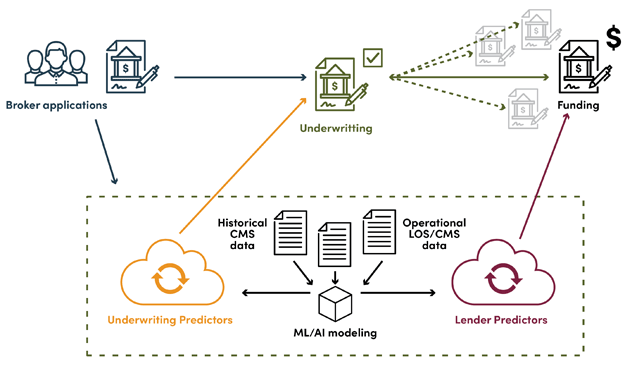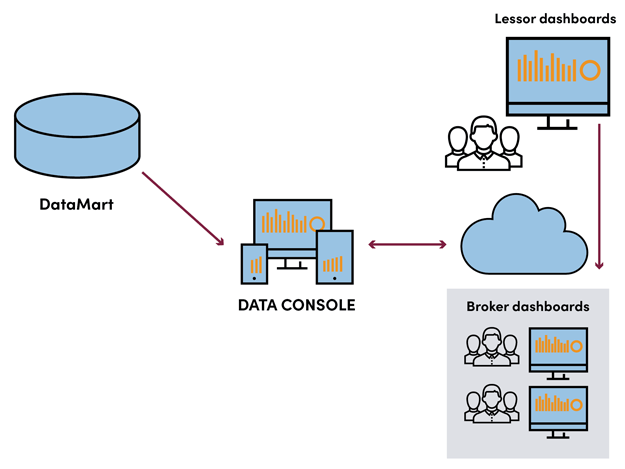
The Amazon Prime television show “The Marvelous Mrs. Maisel” recently re-introduced me to concept of matchmakers. The show’s plotline begins with Mrs. Maisel’s mother, Rose, launching a business as a New York City matchmaker. This intrigued me because the challenges she faced seemed very much like those I have come to understand working with and around brokers in equipment finance. Both get paid upon completion of a match – Rose facilitates a wedding; a broker facilitates a funded deal. Both usually get their opportunities from third parties rather than the actual participants – parents in Rose’s case; vendors and OEMs in the broker’s case. Both tend to grow their business by word of mouth within their “communities,” so competition is regional and fierce. And when Rose started to see success with a couple of wealthy clients, she was “called to the table” of the existing competition and counseled, rather menacingly, to quit. Matchmaking, not surprisingly, is a relationship-based business and her competition did not want their relationships to have new options.
Similarly, brokers have relationships with vendors that they work hard to protect and grow. Sometimes end customers find their own equipment, but they still need financial help securing access to that equipment. So, they call a “matchmaker” to help them consummate access by finding lessors to help fund the match. Perhaps one of the more subtle similarities between matchmakers and brokers is that both find the challenge of meeting the paying customer’s expectations lies in the fact that many of their subjects have less than perfect credentials. One portfolio manager with whom I spoke commented, “We once received an email from the bank that said, ‘No more broker deals,’ until further notice. They were looking to lower the risk of the portfolio.” Of course, this is also the reason matchmakers and brokers are needed and creates the opportunity for innovation.
But there is one very significant difference between traditional matchmakers, particularly matchmakers from Rose’s time in the 1960s, and brokers: data. Rose’s clients usually have one or two offspring who need her help. Yes, she can eventually draw similarities across clients and develop methods for making matches for similar subjects, but her world is one of custom engagements. The primary way her clients help her is with cash for her time.
Brokers, on the other hand, generate a lot of data. This is the good news – they generate a lot of data quickly. The bad news is that they generally don’t have the systems in place to keep data around after completing the transaction. They are so transaction-oriented that their data tends to be short-lived in their systems. The lessors with whom they work, on the other hand, typically keep loads of historical data on origination exchanges as well as the servicing data throughout the life of the lease. Lessors naturally document outcomes – good and bad. Unfortunately, most of this lessor data is “dark” – collected and stored but not used for business purposes. Therein lies their opportunity.
Dark data can be combined with prediction technology so that a lessor can not only help find and price deals according to their portfolio strategy, but the data can also help their brokers perform better, thereby helping the lessor grow the business faster. The figures below show how it works.

Dark data training models for broker interactions.
First, a lessor combines historical and real-time data from all systems, Lease Origination System (LOS), third-party sources and Contract Management System (CMS), into a single database. The deals in the LOS data stream are tagged with source information allowing the lessors to constantly monitor deal flow and quality from their broker partners. But when a lessor combines this with the data from the CMS, they can associate the deals with the outcomes. Lessors can then associate outcomes like delinquency, term, renewal and pricing tier with the brokers who brought the deals. If the lessor builds predictive models for their business, they can provide information back to the brokers immediately regarding not just their interest in the deal, but the quality of the deal in the eyes of both underwriting and prospective lenders working with the lessor. This information empowers the broker to improve their relationship with the lessor by bringing exactly the deals the lessor wants. Prediction automation also reduces the timelines of deals. Better deals faster. What more could a broker want?

Information transparency gives brokers the ability to improve their performance.
They could want more information. Information transparency will further strengthen the ability for brokers to help grow a lessor’s business. As the figure shows a lessor can share information from their business intelligence data consoles or dashboards with the broker via various cloud visualization tools like Microsoft Power BI. Such dashboards provide brokers with the ability to see how their deals are progressing both pre-booking and post-booking as well as how they are performing against the lessor’s expectations. Prediction technology and Information transparency enable ambitious partners to improve their game thereby improving the lessor’s game.
Lessors today are sitting upon a wealth of dark data. Many have begun tapping that data to understand their operations and improve financial performance. But the opportunity for improvement is not limited to the owner of the data. Data can empower other stakeholders to improve their contribution to a partnership. Lessors have the responsibility here because their “matchmaker” partners do not keep data. Most lessors consider their capital as the basis of broker relationships. It’s time to consider their dark data as a basis of improving business with those same partners.
Rose Maisel’s matchmaking industry never scaled. Well, at least not until smartphone matchmaking apps showed up and those put her and her peers out of business. Equipment finance isn’t quite ready for Match.com yet, but lessors can use the same technology to help their matchmakers be more effective for them. Dark data will show us the way.